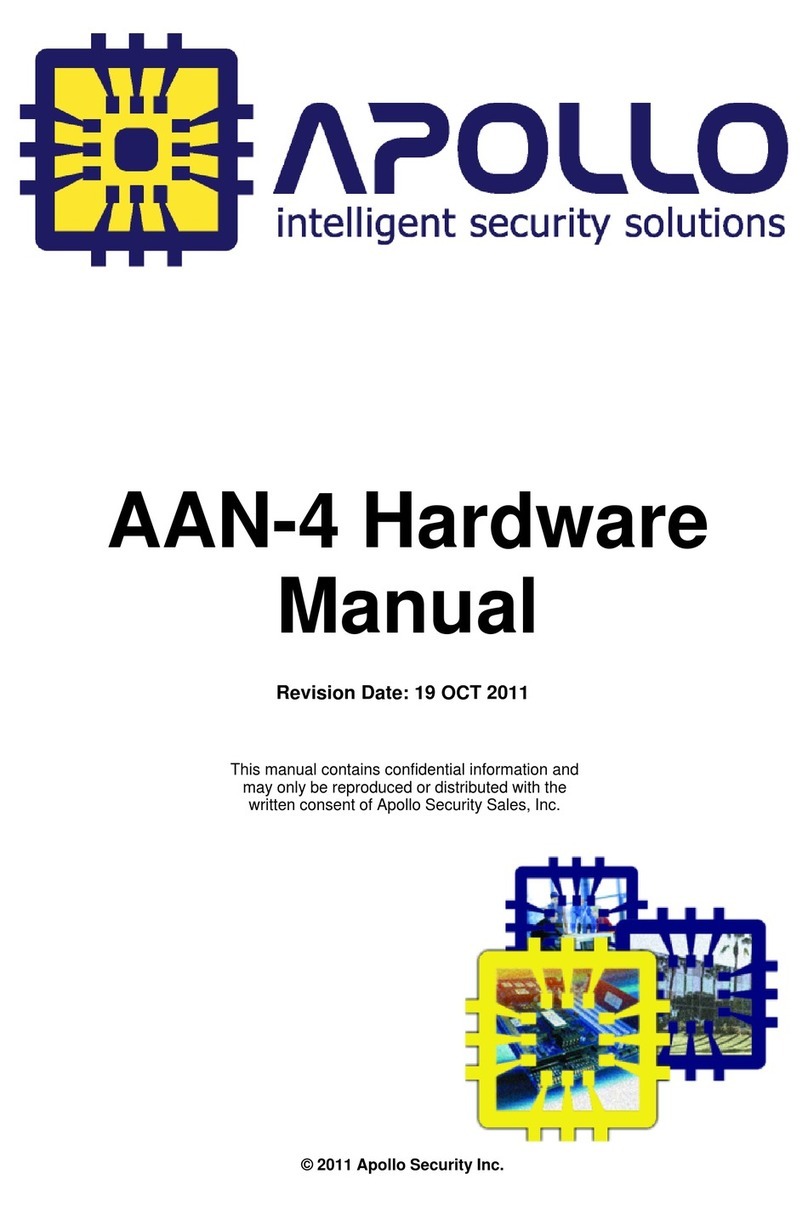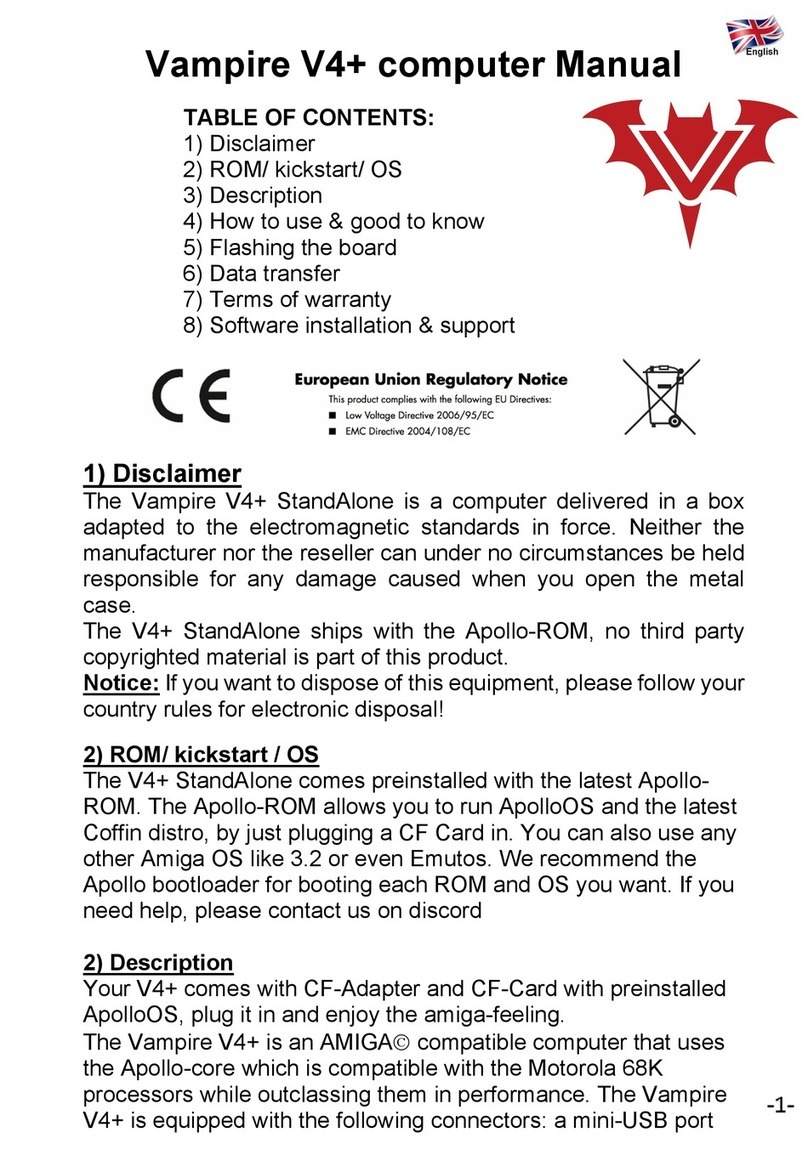
AAN-32 Hardware ManualI
© 2011 Apollo Security Inc.
Table of Contents
Part I Introduction 2
...................................................................................................................................21Overview
...................................................................................................................................32 General Features
...................................................................................................................................43Programming Host
Part II Hardware Layout 6
...................................................................................................................................61Terminal Connectors
...................................................................................................................................82DIP Switches
......................................................................................................................................................... 9DIP Switch Tables
......................................................................................................................................................... 11DIP Switch Function
...................................................................................................................................113Connectors
......................................................................................................................................................... 12Device Port Communication Sockets
......................................................................................................................................................... 12Memory Backup Connection
......................................................................................................................................................... 13SIMM Memory Sockets
......................................................................................................................................................... 13Host Interface Module Connector
...................................................................................................................................144 LEDs
......................................................................................................................................................... 14Start Up Mode
......................................................................................................................................................... 14Normal Operation
...................................................................................................................................145Firmware
...................................................................................................................................156 Additional Installation Information
......................................................................................................................................................... 16Mounting Holes
Part III System Wiring 20
...................................................................................................................................201Power
...................................................................................................................................202Grounding
......................................................................................................................................................... 20DC Ground
......................................................................................................................................................... 20RS-485 Signal Ground (SG)
......................................................................................................................................................... 20Safety (Earth) Ground
......................................................................................................................................................... 21Grounding System
......................................................................................................................................................... 21Grounding Potential Difference Checks Before Connecting
...................................................................................................................................213Host Communication Connection
......................................................................................................................................................... 22Serial ......................................................................................................................................................... 23Network .................................................................................................................................................. 24ANI-1 ........................................................................................................................................... 24Hardware Layout
...................................................................................................................................... 24Jumpers...................................................................................................................................... 24RJ-45 Jack
...................................................................................................................................... 24Host Interface Connector
...................................................................................................................................... 25LEDs
.................................................................................................................................................. 25ANI-100 ........................................................................................................................................... 25Introduction
........................................................................................................................................... 25Hardware Layout
...................................................................................................................................... 26DIP Switches





























